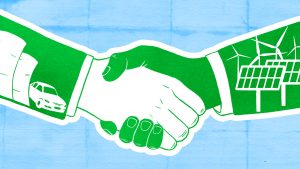TechInAfrica – As one of the 15 largest carbon dioxide emitters in the world ranking, the future of coal starts to become questionable. A satellite imagery analysis by Greenpeace had South Africa as the world’s deadliest air pollution spot. The Netherlands-base environmental non-profit organization also released a brand new survey that indicated the blasphemous hotspot of Sulphur dioxide emissions on the country, placing South Africa in second place worldwide.
Johannesburg is concluded by researchers as the worst receiving hit in South Africa. The pollution levels are reported to cost residents 3,23 years of their life. Last year’s Eskom’s air pollution from its power plant had lost 2,200 people on the same year, as desktop research by groundWork, a civil society group projected. The air pollution had become a national threat and calls for urgent notice.
A move toward clean energy is on the horizon, as South Africa landed on a clean energy deal, a major investment that will see the country’s effort toward better environmental awareness. The deal is a joint venture between the UK Government’s Department for Business, Energy and Industrial Strategy (BEIS) and Macquarie-owned Green Investment Group.

The energy projects are expected to generate clean electricity to power approximately 200,000 homes per year, and the investment will help cut 844,000 tonnes of greenhouse gases emission per year. This project is scheduled to complete in 2020 and provides job vacancies for almost 40% of the construction, operation, and maintenance position hired from local communities.
UK Climate Investments (UKCI) and the funding agreement with H1 Holdings will support the development of 254MW of renewable projects, such as 4MW Kruisvallei Hydro project, the 140MW Kangnas Wind Farm, and the 110MW Perdekraal East Wind Farm.
Richard Abel, Managing Director of UKCI, said: “Over 90 percent of electricity generation capacity in South Africa currently relies on fossil fuels. Our partnership with H1 Holdings supports the country’s transition to a new energy mix promoting cleaner growth in southern Africa’s largest economy whilst stimulating economic development in rural areas and supporting increased BEE participation in the renewable sector.”

Known to be Africa’s most industrialized country, it’s lucky enough to have excellent solar and wind resources at its disposal, which would hopefully spring more investments in the renewable energy sector.
The Cyril Ramaphosa-led state plans to install, 400 megawatts of wind energy, 8,400 megawatts of solar photovoltaic energy and 1,000 megawatts of concentrated solar power by 2030. Currently, the renewable power source only accounts below 3% of the country’s national electricity supply.
Source: weetracker.com




